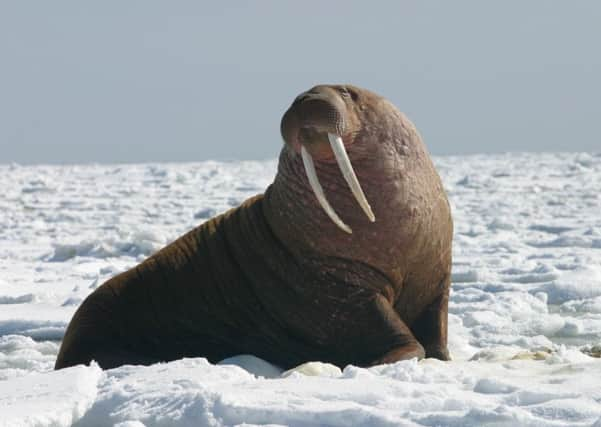On the wildside


The talk was based around two summer visits to north-east Greenland and Svalbard. The Greenland trip was based in tents and old trappers’ huts which are still maintained as emergency refuges by the Danish Army’s Sirius patrol.
The tundra is permanently frozen but the surface soil melts enough in the 24 hour daylight of the short arctic summer to allow thousands of small but colourful plants to flower.
Advertisement
Hide AdAdvertisement
Hide AdAmong the most distinctive are the white bells of Cassiope, the Arctic heather, the larger white cups of mountain avens, the emblem of the Scottish Rock Garden Club, the purple Arctic river beauty which is a low growing relation of rosebay willow herb. There were several saxifrages some of which still grow high on some Scottish mountains.
Trees are absent but there are dwarf willows and birch which hug the ground. Several of the small wading birds that can be seen on Scottish beaches in winter breed in Greenland - turnstone, sanderling and knot. Skuas hunt over the tundra and one exciting sighting was made of the large all white Greenland falcon.
Increasing numbers of the pink footed geese that come to south-east Scotland every autumn breed in this part of the arctic as climate change reduces the Greenland ice cap.
Both pale arctic wolves and occasional polar bears wander across the open ground so a set of flares was essential in case of a confrontation. Neither was seen and the most obvious large animal was the musk ox. The most troublesome creatures were much smaller. Mosquitoes can be a plague in the Arctic though at least they don’t carry malaria.
Advertisement
Hide AdAdvertisement
Hide AdSvalbard is the correct name for the group of islands many British people call Spitzbergen which is only one of the group. All were circumnavigated in a former Russian research ship with an ice hardened hull.
Some seabirds which also occur in Scotland such as puffins and fulmars, here in their high arctic dark phase, were encountered along with huge numbers of little auks which occasionally reach our coasts after winter storms.
Several species of seal were seen, the most impressive being the walrus which weighs up to a ton.
Zodiacs were used to get ashore at interesting places where more Arctic flowers such as the Svalbard poppy were noted as well as hardy residents such as reindeer and ptarmigan. Other birds migrate south for winter including the black and white barnacle gees which come to the Solway Firth.
On the north-east coast, where ice lingers all summer, sightings of polar bears hunting for seals among the expanse of white were the climax to the voyage.